Today on my weekly Livestream, I designed a cover for an upcoming book using an image generated by “AI”—Midjourney, to be specific. The first hour has the cover design:
There are several of these programs around with the idea that they can render images based on word prompts.
Here are a few examples I made with the prompt “elven fantasy white castle towers on fire with apocalyptic purple sky and stormy ocean“
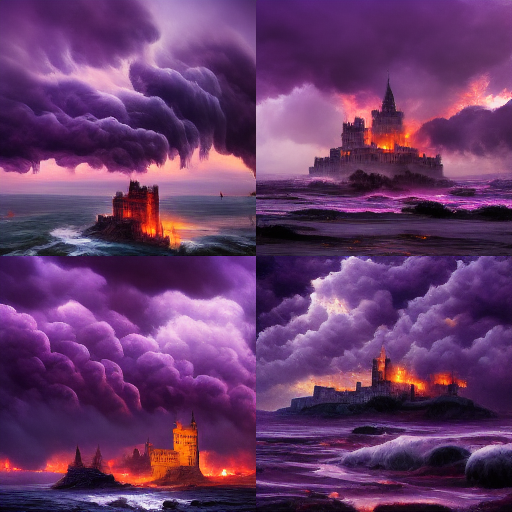
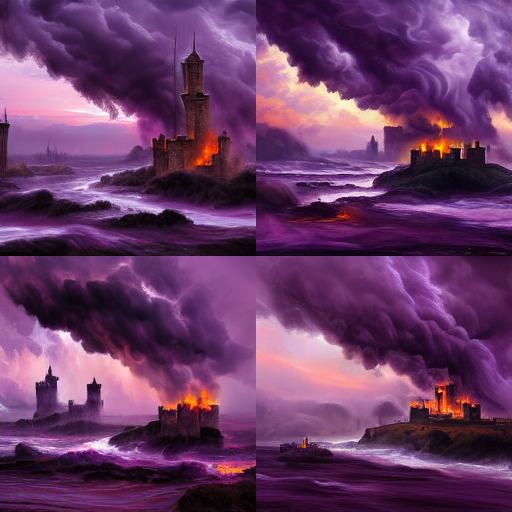


Here are the “final 2” images I came up with after upscaling and redrawing them:
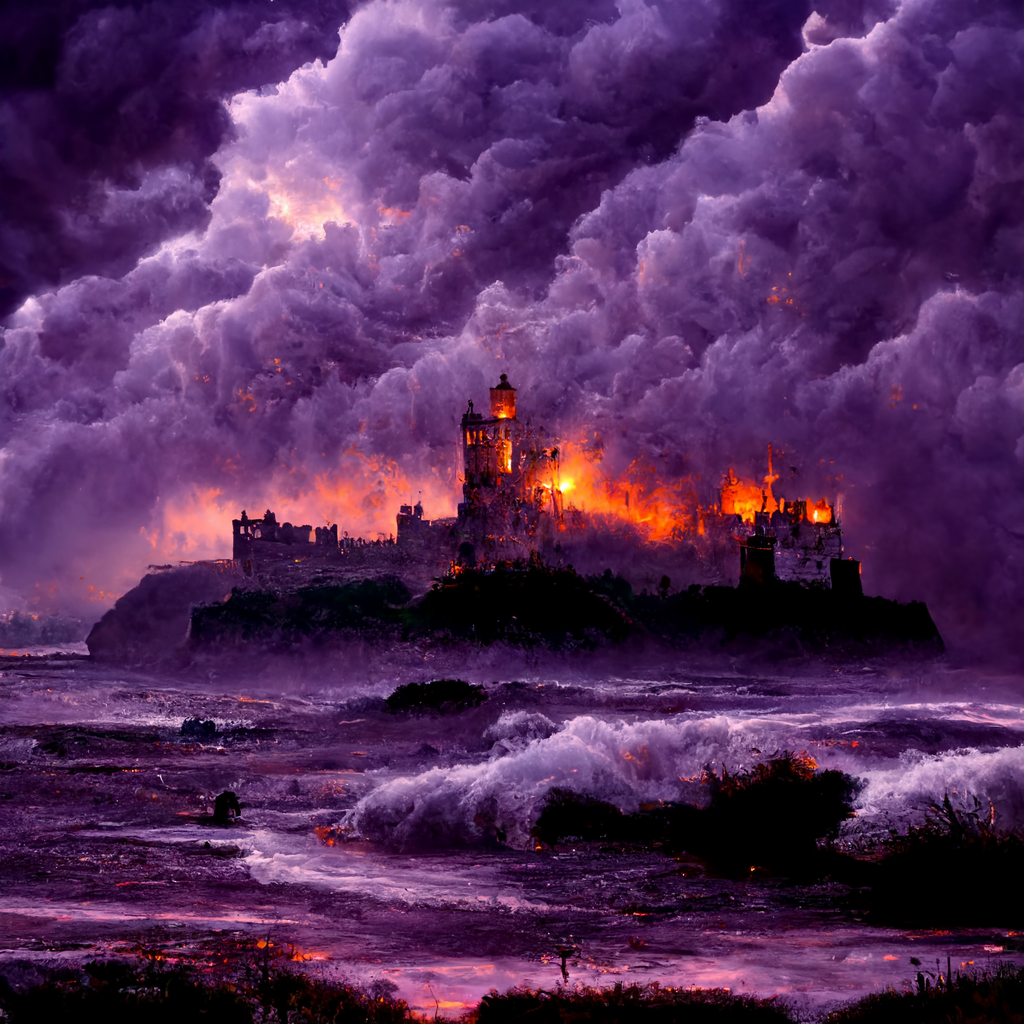
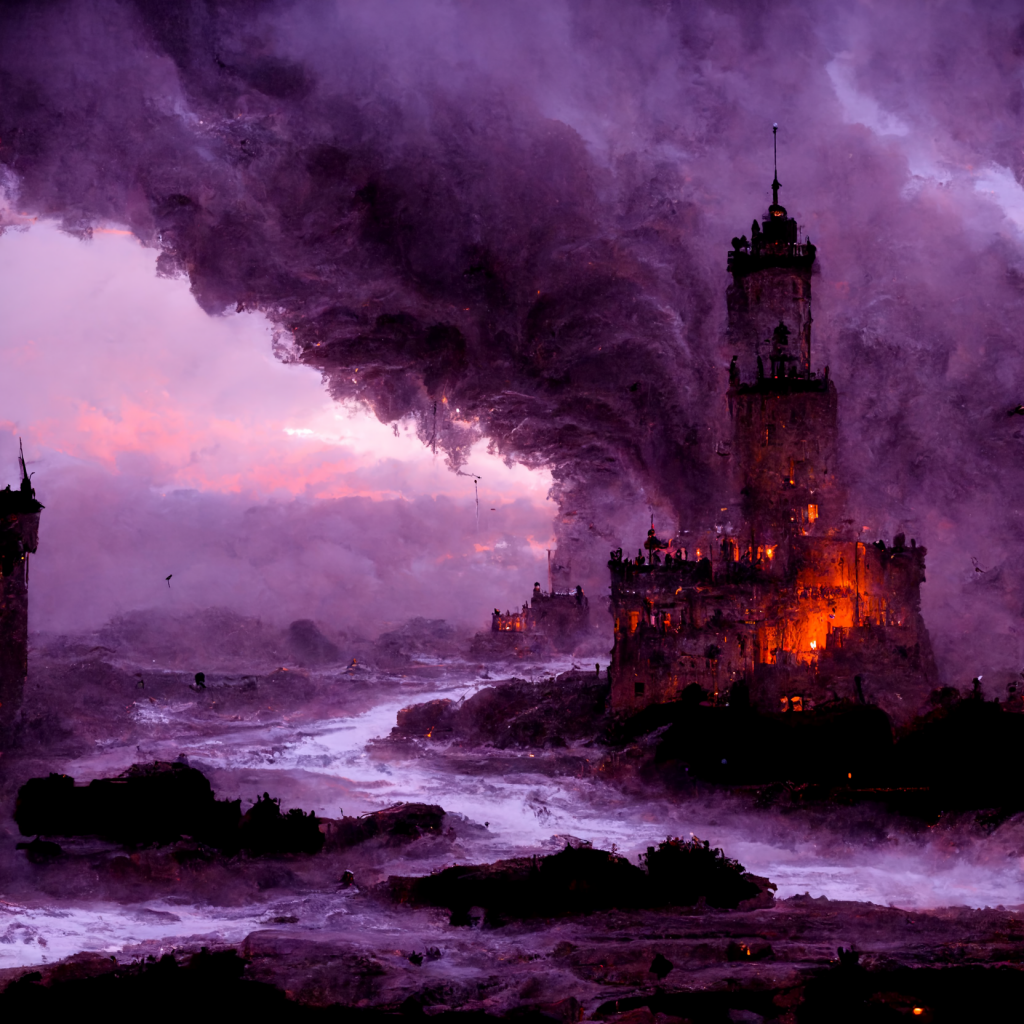
And here is the cover (note: in the video you will find out I actually blended the two together to add some clouds/sky to make the image taller):
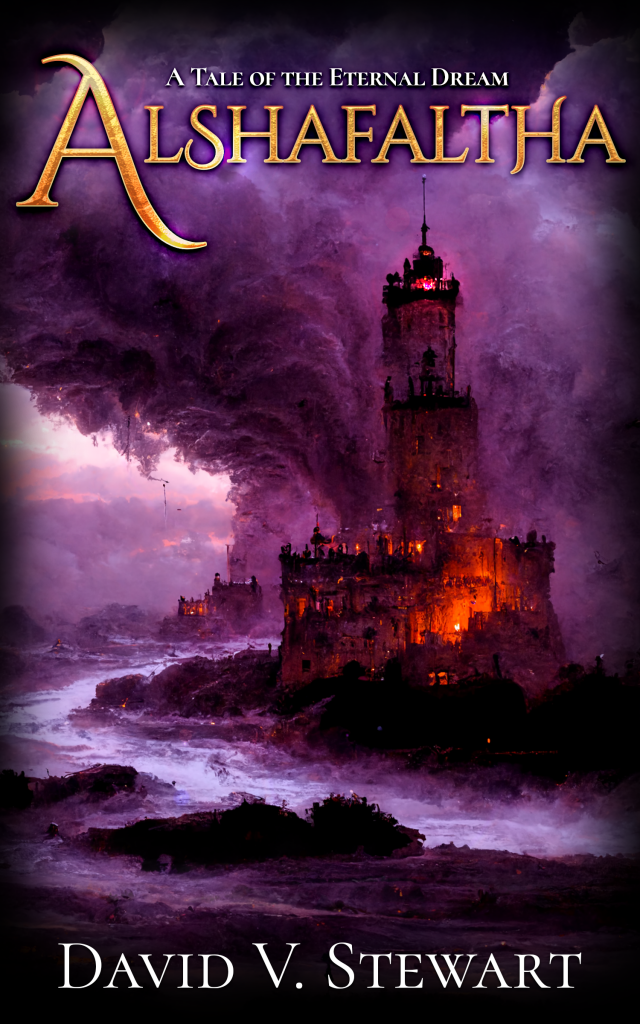
Just to round things out, here are some faces I made using the program:
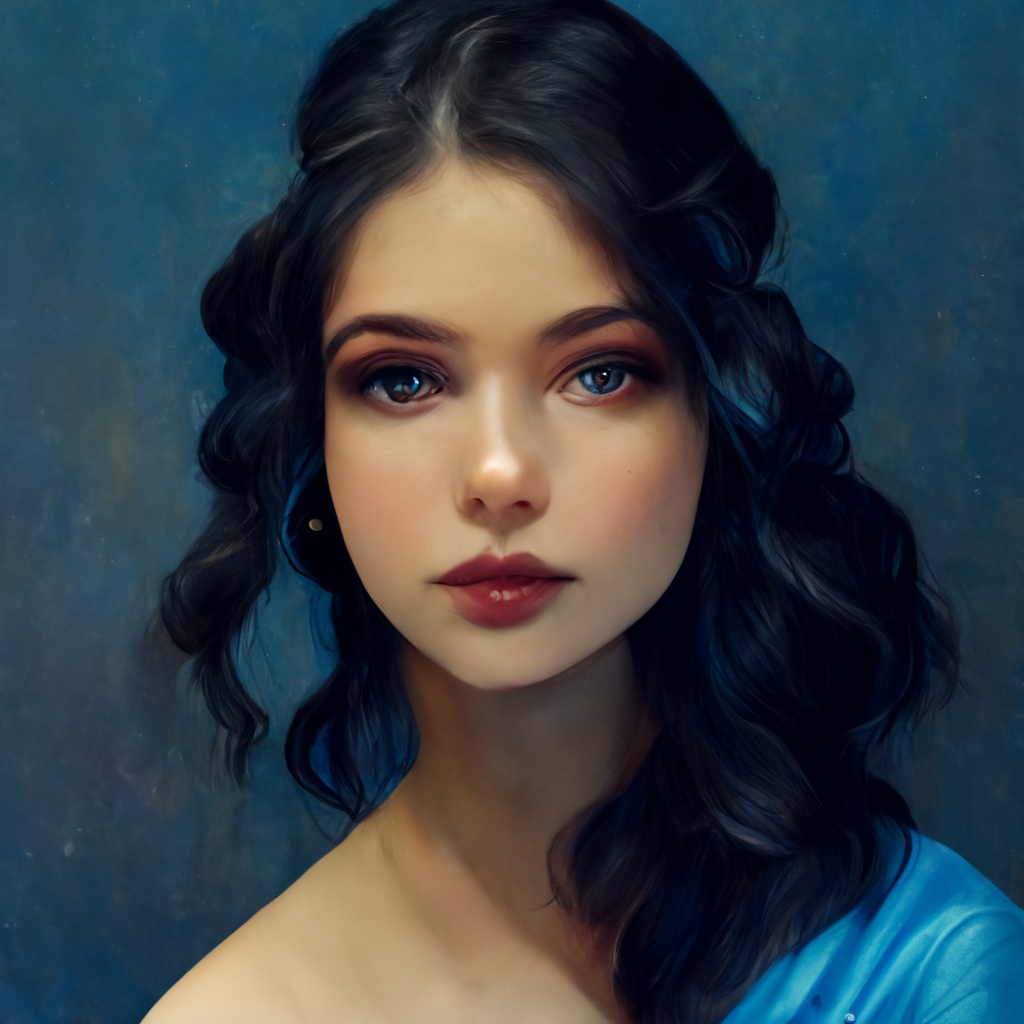

For untrained artists, all these images are very impressive. If you are trained, they are less so. I’m firmly in the camp of “these are amazing for a machine.” The AI, though certainly very cool, does not compose images the way a real human would, and in general, it will struggle with prompts that combine multiple elements into a single composition, like a person, a scene, colors, and aesthetics. It also tends to miss on things like facial details and proportions since it’s not a person.
Luckily, for most book covers, we don’t need highly complex compositions; we need specific colors and evocative textures. Remember the three main components of a book cover are the text, the central image, and the auxiliary elements. The AI can handle the central image part reasonably well, as long as you know its limitations.
This is great for indie writers because it means you can generate a useable book cover quickly and cheaply. The most common question I get asked by my audience is why I don’t do more illustrated book covers. There are multiple reasons (like the fact that illustrated book covers do poorly in some genres), but when it comes to fantasy, the main reason is that it is far too expensive. When I only expect a story to sell a few hundred copies, and I’m selling it cheap due to its length, it’s a total waste of money to hire an artist to paint a cover for $1,000 (and that’s cheap for a GOOD artist). I can get the colors and basic image done well enough by AI to make a decent cover and sell a cheap story. I can spend more time writing and less time designing. More profit means I can make more money and eventually hire more artists for my bigger projects.
The AI, at this point, cannot replace a good artist. It can, however, replace BAD artists and photoshop for some genres. Remember that illustrated covers are a no-sell for things like romance.





Illustrated covers:
Good for fantasy (I assume sci-fi & adventure yarns as well).
Bad for romance (I assume drama and such as well).
DYI if you’re in the little leagues.
AI if you can’t draw and don’t mind looking cheap.
AI currently only good for landscapes/buildings and maybe very simple, mildly cartoony portraits, again if you don’t mind it being rather rough.
Any other advice on how to plan a stylized cover?
-Color
-Font and text design
Do these right, and they will do a lot of work for you.
I am assuming then that you are not of the opinion that AI is demons?
Not demons, but “ghosts in the machine”…
I don’t think AIs are demons, BUT like anything, I believe that it is possible for demons to use the medium. But if there is demonic activity, it’s probably much less significant than with something that offers real temptation and obsession, like pornography.
I’m as interested in this ai paint thing as I am on how did you came up with that name. I think I remember you recommending against made up names in fantasy unless you were a JRRT tier linguist.
It’s originally the name of Immortal’s last true album – All Shall Fall – and I just ended up liking the name and didn’t replace it.
Pingback: Sensor Sweep: D&D, Fritz Leiber, A.I. Art, Last Bastions – castaliahouse.com
Where would you sell them though?
After looking into it thebookcoverdesigner.com have stated they dont accept such things.
What are you talking about? You sell to authors directly or else use them for your own books.